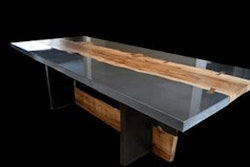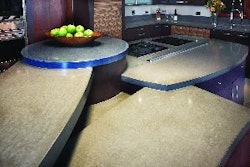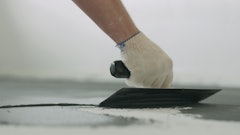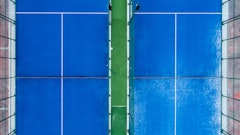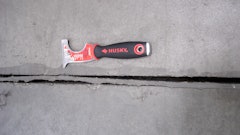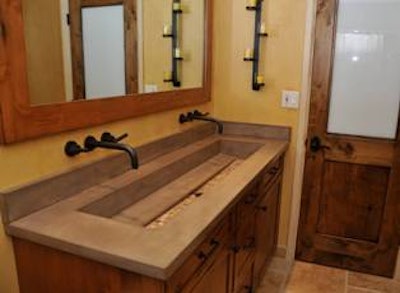
While many consumers are still unfamiliar with the variety of functional household items that can be formed out of concrete, the material is gaining popularity and becoming more desirable. With available items such as sinks, countertops, bathtubs and fireplace surrounds, more consumers are looking to make their first purchase of concrete products.
Eric Pottle, owner of Surface Works AZ located in Peoria, Ariz., encountered one client such client. "They were remodeling some things in their home, and it was their first experience with concrete. They had seen some things and they liked it, and they wanted something different," Pottle says. To fit with his clients' request, he created a brown trough sink.
Prior to starting the project, Pottle completed a few preliminary sketches on the concept of a trough style sink. "We landed on a design where it slopes to the center, and the center has a smaller trough that is inlaid in some river stones sloping to the drain with a single drain in the center," Pottle says.
The sink is made out of Glass Fiber Reinforced Concrete (GFRC) with a custom color. With Davis Colors, Pottle showed the client a few color options ultimately creating three custom color samples to determine the client's favorite choice.
To create custom pieces, Surface Works fabricates molds when using the GFRC process. "For the mold we used a high pressure laminate which is over a fiber board or particle board, depending on the finish the customer wants," Pottle says. Pottle prefers the high pressure laminate because if the material is properly handled it can be used for another job.
The dimensions of the sink are custom according to the specific job. First, the color is integrally mixed into the base coat that is sprayed on the mold. Then, he colors the back coat so the color is even in the event that a spot was missed on the base coat. "You mix up a fiber back coat which contains your glass fibers," Pottle says. "That is hand laid on the back of the base coat where your structural strength comes in with all of the glass fibers that give it its structure and integrity."
One benefit of GFRC is the accelerated schedule. "You can fabricate a mold one day, pour it the next and finish it the following day," Pottle says. "With GFRC you can take things out of the mold a lot quicker than with wet cast." Pottle finished up the project with polishing, sealing and waxing.
One hitch that Pottle encountered was with the cabinets the homeowner had that would serve as the base for the sink. "They had purchased their cabinets prior to deciding on what they wanted their sink to be. Since it was a long trough the cabinets were three separate pieces," Pottle says. "We then had to modify the cabinets a little so the trough had clearance."
Pottle's integral sink received an honorable mention in the 2011 Circle of Distinction Award. Click here for more information on the Circle of Distinction Award.




